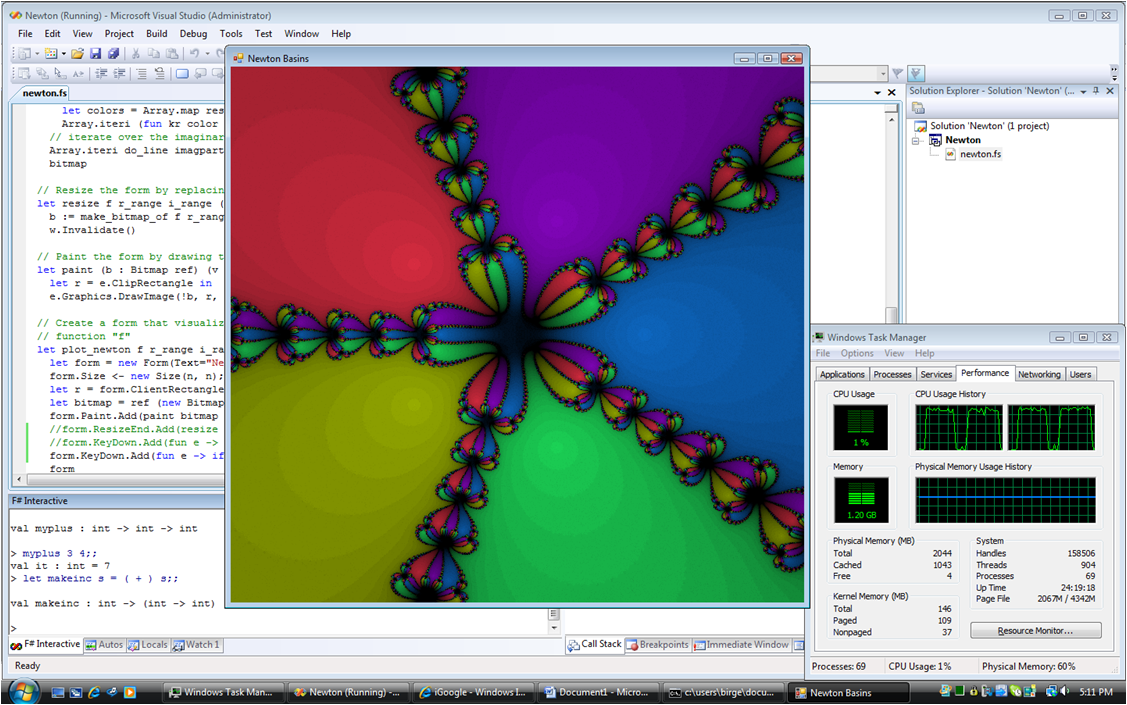NB: The recent release of the F# CTP breaks much of this code. I will update this page as soon as I get a chance, but please be aware that if you copy the code in as-is, it will not work.
I think the best way to appreciate how efficient F# is, especially for numerical analysis, is to show an implementation of a short program. The following is a bare-bones application which computes the basins of attraction for a Newton fixed point iteration which finds the roots of a polynomial in the complex plane. This computation is threaded across all available processors, and is a stand alone (albeit absolutely minimal) Windows application. The entire program is less than 50 lines, a testament to F# with respect to numerics and the .NET framework with respect to the GUI.
Briefly, Newton’s method is an iterative way to solve for the zeros of nonlinear functions. You start with an initial guess, and based on the local slope of the function, you make a refined guess for the root by following the slope all the way to zero. Unless the function really is a line this guess will be wrong, of course, but hopefully a little more accurate than where you started. If you start close enough to a root, repeated applications of the approximation will end up converging to the correct answer to arbitrary precision. If you start far away from one, however, you could end up at a root far away from your starting point, or you might never converge. It turns out that the map of where you end up as a function of where you start is a fractal, and a rather beautiful one for many equations. Below is a screen shot of the final program. Visible in the task manager is the nearly full usage of both cores of the processor during the render. (Click for a bigger version.)
The program below will iterate through up to 32 steps of Newton’s method on an arbitrary polynomial, starting at a grid of points in the complex plane. It shades each point based on the location of the final root found, with the hue determined by which root is converged to and with the brightness determined by how many steps were required. I’ll go through most of the functions, explaining each and pointing out how functional programming techniques are used. I do not claim this program is a highly efficient implementation! The main point was to illustrate several aspects of F#. It is however, pretty fast and makes use of multiple threads. In fact, the ease with which this program was parallelized is one of the main points I am trying to illustrate, and is made possible by the immutability of data in F# (and the Flying Frog Numerics library, a review of the which will be the subject of my final post on F#).
